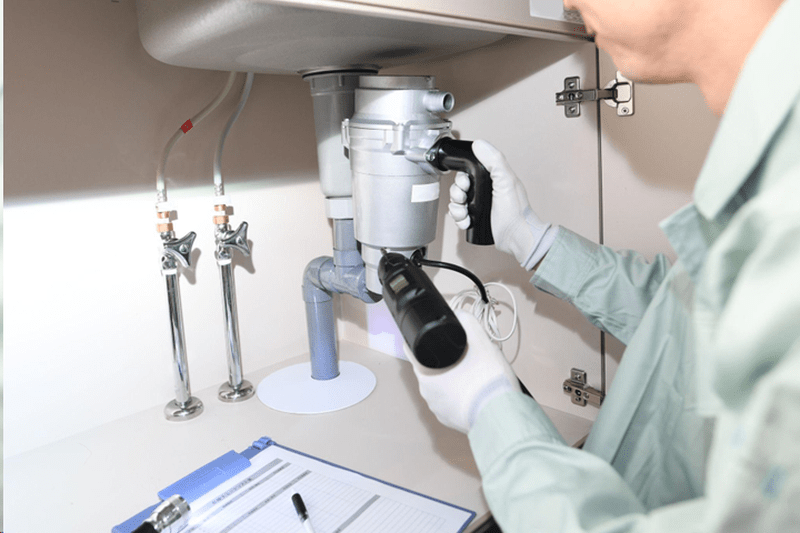In the modern kitchen, a garbage disposal unit is a marvel of convenience, grinding up food waste and keeping the drains clear and odor-free. However, like any appliance, it can develop issues over time, leading to inefficiency or total failure. Understanding how to navigate garbage disposal repairs is essential for any homeowner looking to maintain a functional and efficient kitchen drain system. This guide aims to demystify garbage disposal repairs, offering practical advice to restore your kitchen’s heart to its optimal state.
Identifying Common Garbage Disposal Issues
The first step in navigating garbage disposal repairs is recognizing the signs of trouble. Common issues include:
- Jams: Often caused by the disposal attempting to grind up materials it can’t handle, such as bones, fibrous vegetables, or non-food items.
- Clogs: Occur when ground food waste accumulates in the plumbing, obstructing the drain.
- Leaks: This can be due to a loose sink flange, a worn-out gasket, or a crack in the unit itself.
- Noises: Unusual sounds, like humming or grinding, may indicate a jam or a failing motor.
- Failure to Start: This may result from electrical issues, such as a tripped breaker or a faulty switch.
Steps for Troubleshooting and Repair
Once you’ve identified the issue, follow these steps to troubleshoot and potentially repair your garbage disposal:
- Safety First: Always ensure the garbage disposal is turned off and unplugged before attempting any repairs. Never put your hand inside the disposal unit.
- Reset the Unit: Most disposals have a reset button on the bottom. If the unit has overheated or is not starting, press this button after addressing any obvious issues (like a jam).
- Clear Jams: Use an Allen wrench on the bottom of the unit to manually turn the blades. This can help dislodge any items causing a jam. Alternatively, a broom handle from above can sometimes free the blades. Remember to have the unit off when attempting this.
- Check for and Remove Clogs: If the sink is not draining well, the clog may be in the P-trap (the curved pipe section under the sink). Place a bucket under the P-trap to catch water, then unscrew the fittings and remove the trap to clear any obstructions.
- Address Leaks: Tighten any loose connections. If the leak is from the sink flange or gasket, these may need to be replaced. Use a plumber’s putty for the flange and consult your disposal’s manual for specific gasket replacement instructions.
- Investigate Electrical Issues: If the disposal doesn’t start, check other appliances for power issues to rule out a tripped breaker. Test and reset the disposal switch if necessary.
When to Seek Professional Help
While many garbage disposal issues can be resolved with DIY efforts, there are circumstances where calling in a professional plumber is the best course of action:
- Persistent Problems: If the same issue recurs despite your efforts, there may be a deeper problem that requires expert diagnosis.
- Complex Repairs: If troubleshooting suggests a need to disassemble parts of the disposal or deal with complex plumbing, a professional can ensure repairs are done safely and effectively.
- Upgrades: If your disposal is old and frequently encounters issues, it might be more cost-effective to replace it. A professional can recommend and install a unit that suits your needs and kitchen usage.
Maintenance Tips to Avoid Future Repairs
Preventive maintenance can significantly reduce the likelihood of garbage disposal problems:
- Run Cold Water: Always use cold water when grinding food waste, as it solidifies any fats or oils, allowing them to be ground up and flushed away more effectively.
- Avoid Hard and Fibrous Materials: Don’t grind materials like bones, coffee grounds, or fibrous vegetables (e.g., celery), as these can jam or clog the disposal.
- Clean Regularly: Freshen your disposal by grinding citrus peels or using a mixture of baking soda and vinegar to eliminate odors and minor clogs.
- Use It Regularly: Regular use prevents rust and corrosion, ensuring the disposal’s moving parts remain functional.
Conclusion
Navigating garbage disposal repairs doesn’t have to be a daunting task. By understanding common issues, following a systematic approach to troubleshooting, and knowing when to call in a plumber, you can ensure your garbage disposal remains a reliable kitchen ally. Regular maintenance and mindful usage are the keys to extending the life of your disposal and maintaining the efficiency of your kitchen drains. With the right knowledge and approach, you can handle disposal repairs confidently, keeping your kitchen running smoothly.
Article Submitted By Community Writer




